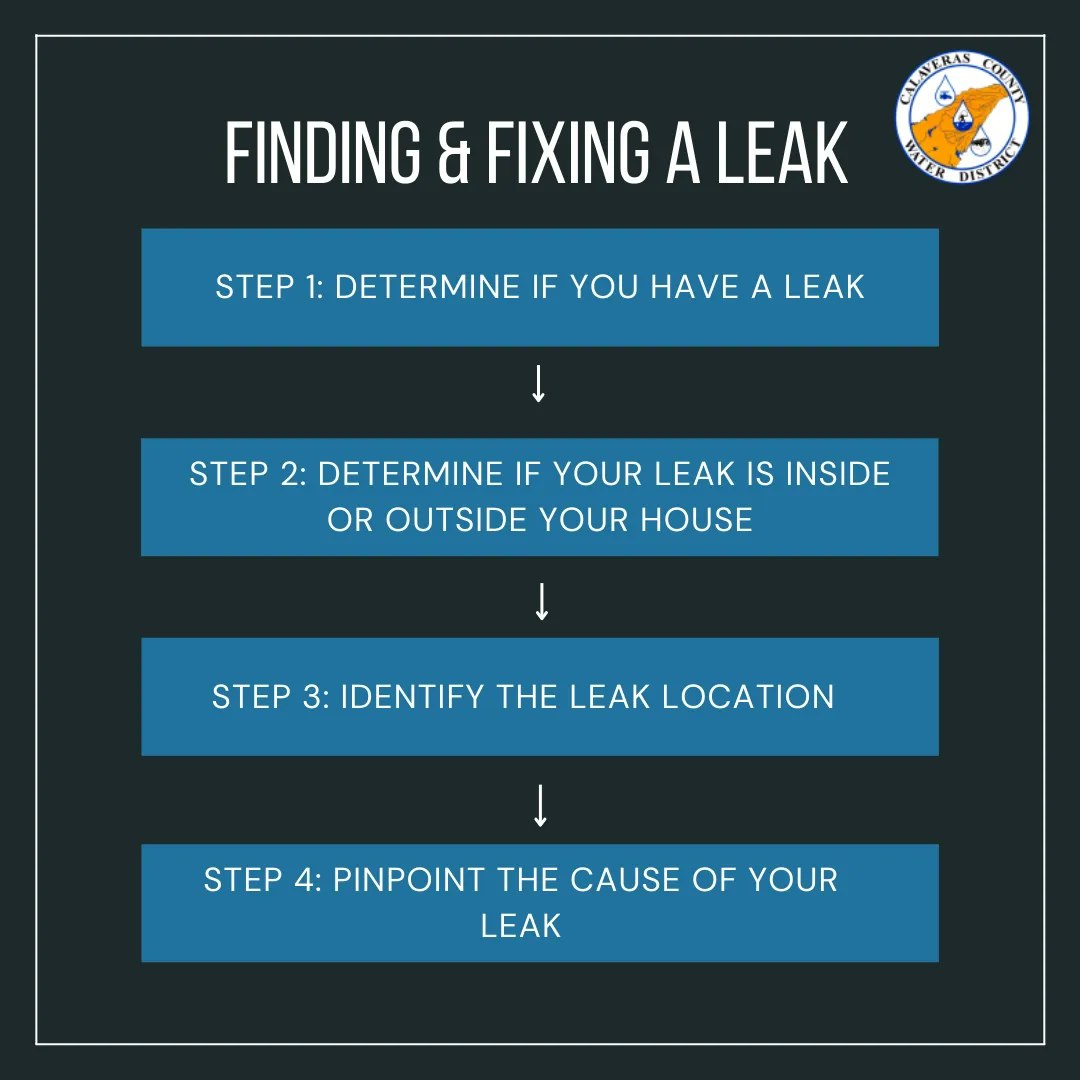Do you have a water leak?
Step 1: Determine If You Have A Leak
If you suspect a water leak, one of the easiest ways to detect leaks is to observe your water meter.
- Turn off all faucets and water-using appliances, such as the ice maker, dishwasher and clothes washer.
- Locate you water meter and lift the cover using a tool, such as a screw driver to see the meter dial.
- If you have an analog meter, the needle is moving, you have a leak.
- If you have a new AMI digital meter, there will be a flow icon to alert you that water is flowing.
- If the needle appears to be still, or the flow icon is not on, record the meter reading or mark the needle position with a pencil or piece of tape.
- Keep the water off. Wait at least 15-30 minutes. (Make sure nobody turns on a water-using appliance).
- Reread the meter gauge or check the needle location (or flow icon for new AMI meters) again. If the needle is spinning, or the flow icon is on, you likely have a leak somewhere in your system.
Step 2: Determine If Your Leak Is Inside Or Outside Your House
If the needle on your meter head is spinning, you likely have a leak. Now follow these steps:
- Shut off the main water valve to the inside of your house.
- Return to the water meter and lift the cover to see the meter dial.
- If the needle appears to be still, record the meter reading or mark the needle position with a pencil or piece of tape.
- Keep the water off. Wait at least 15-30 minutes. (Make sure nobody turns on a water-using appliance).
- If the needle has moved and the water is shut off to the house, you have a leak somewhere outside of the house.
- If the meter has not moved and the water to the house is shut off, your leak is somewhere inside the house.
Here is an educational video created by Tuolumne County Resource Conservation District on how to detect a water leak.
Steps 3 & 4: Identify the Leak Location & Pinpoint the Cause of Your Leak.
Faucets
Faucet leaks are usually caused by worn washers or “O” rings (for washer-less faucets). To repair, turn off the water supply line to that faucet, replace the washer and turn on the line again.
Toilets
To determine if your toilet is leaking, look at the toilet bowl after the tank has stopped filling. If the water is still running into the bowl, or if you can hear water running, your toilet is leaking.
If you do not see or hear water running, your toilet may have a silent leak. To test for a silent leak, drop a little food coloring into the tank. Do not flush. Wait for about 20 minutes. If the food coloring appears in the toilet bowl, your toilet has a silent leak. It is probably located in or around the plunger ball or flapper valve at the bottom of the tank. These leaks are easy to fix with parts from your hardware or home store.
Irrigation Systems
There are a number of ways to determine if your irrigation system is leaking.
- Taller, greener vegetation or moss growing around the sprinkler heads are signs of a damaged or dirty valve. Clean grit from valves and replace worn gaskets or seals.
- Wet spots, mud, and eroding soil may indicate a broken pipe or riser. Dry spots in your lawn could also be a sign that a sprinkler is damaged. To locate the source of the leak, you’ll need to dig around the sprinkler. Wet spots or muddy areas around the valves point to a loose connection or aging washers.
- Wet spots on pavement also indicate possible leaks. Watch your sprinklers in action to determine which one is showering on the pavement. Then turn off the water and check the sprinkler head and riser. Sprinklers sprouting geysers of water indicate broken sprinkler heads. Replace them.
Other Possible Culprits
- A warm or hot spot on your floor, combined with an increase in your natural gas bill, could indicate a broken hot water pipe in the concrete slab beneath your home. If this is the case, you will probably need to call a plumber to reroute the pipes.
- Check outside taps for leaking water, particularly during the summer watering season. A hose mistakenly left dribbling away on the grass or garden can waste thousands of gallons of water over the course of the summer.
IF YOU ARE UNABLE TO LOCATE THE LEAK, CONTACT A WATER LEAK LOCATOR OR PLUMBER FOR ASSISTANCE.

